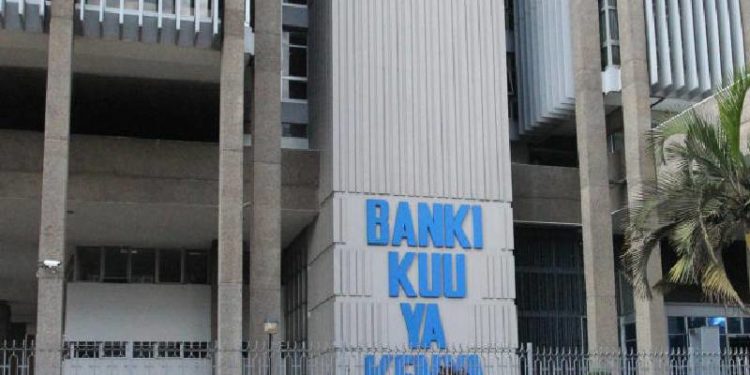In a recent development, Kenya’s Monetary Policy Committee (MPC) implemented the second increase in the benchmark Central Bank Rate (CBR) under the leadership of Governor Kamau Thugge.
The CBR has risen from 10.5% to 12.5%, marking a significant move to tackle challenges associated with the country’s depreciating currency.
The primary motivation behind the 200 basis point increase, the largest since 2011, is to alleviate pressures on the exchange rate. The Kenyan shilling has experienced a substantial depreciation of 24.2% at Sh153.3 against the dollar as of today, compared to Sh123.4 on January 3.
This depreciation has not only raised concerns about its impact on domestic prices but has also contributed significantly to inflation, accounting for about 3.0% of the overall inflation of 6.8% in November.
The MPC acknowledged the adverse effects of the weakening exchange rate on the value of foreign currency-denominated debt, particularly in the context of rising external debt service in the public sector, with debt rising by Sh40 billion every time the Kenya shilling depreciates by a shilling.
This move is expected to increase the cost of loans for consumers and businesses, a decision that has raised concerns within the banking industry.
The Kenya Bankers Association had cautioned against the rate hike, citing potential credit risks, a potential increase in non-performing loans, and the destabilization of the industry.
The Chief Executive Officer (CEO) of the Kenya Bankers Association, Habil Olaka, expressed surprise not at the decision to increase the central bank rate but rather at the magnitude of the increase.
He emphasized the Central Bank’s mandate to ensure price stability, control inflation, and maintain a stable exchange rate.
In response to the rate hike, the banking industry is gearing up to adopt responsible lending practices. The focus is on assessing the borrower’s creditworthiness carefully and implementing measures to prevent a buildup in non-performing loans.
The industry is already transitioning towards risk-based lending, tailoring loan terms and interest rates based on individual credit profiles. This approach is expected to help mitigate the risks associated with the rate hike and ensure that borrowers receive financing aligned with their ability to repay.
The Kenya Bankers Association has urged banks to engage in negotiations with customers facing financial difficulties due to the interest rate hike.
This includes discussions on revised repayment schedules, loan restructuring, and providing temporary relief to ease the burden on borrowers.
Additionally, the banking industry is encouraged to provide non-financial assistance to customers, such as guidance on proper budgeting, investment tools, and promoting financial wellness.
The Central Bank’s decision to increase the CBR reflects a proactive approach to addressing currency depreciation and its cascading effects on inflation and the economy.
The banking industry, though cautious about potential risks, is gearing up to implement responsible lending practices and support customers through financial and non-financial assistance measures.
In a recent development, Kenya’s Monetary Policy Committee (MPC) implemented the second increase in the benchmark Central Bank Rate (CBR) under the leadership of Governor Kamau Thugge.
The CBR has risen from 10.5% to 12.5%, marking a significant move to tackle challenges associated with the country’s depreciating currency.
The primary motivation behind the 200 basis point increase, the largest since 2011, is to alleviate pressures on the exchange rate.
The Kenyan shilling has experienced a substantial depreciation of 24.2% at Sh153.3 against the dollar as of today, compared to Sh123.4 on January 3.
This depreciation has not only raised concerns about its impact on domestic prices but has also contributed significantly to inflation, accounting for about 3.0% of the overall inflation of 6.8% in November.
The Marginal Propensity to Consume (MPC) acknowledged the adverse effects of the weakening exchange rate on the value of foreign currency-denominated debt, particularly in the context of rising external debt service in the public sector, with debt rising by Sh40 billion every time the Kenya shilling depreciates by a shilling.
This move is expected to increase the cost of loans for consumers and businesses, a decision that has raised concerns within the banking industry.
The Kenya Bankers Association had cautioned against the rate hike, citing potential credit risks, a potential increase in non-performing loans, and the destabilization of the industry.
The Chief Executive Officer (CEO) of the Kenya Bankers Association, Habil Olaka, expressed surprise not at the decision to increase the central bank rate but rather at the magnitude of the increase.
He emphasized the Central Bank’s mandate to ensure price stability, control inflation, and maintain a stable exchange rate.
In response to the rate hike, the banking industry is gearing up to adopt responsible lending practices. The focus is on assessing the borrower’s creditworthiness carefully and implementing measures to prevent a buildup in non-performing loans.
The industry is already transitioning towards risk-based lending, tailoring loan terms and interest rates based on individual credit profiles.
This approach is expected to help mitigate the risks associated with the rate hike and ensure that borrowers receive financing aligned with their ability to repay.
The Kenya Bankers Association has urged banks to engage in negotiations with customers facing financial difficulties due to the interest rate hike.
This includes discussions on revised repayment schedules, loan restructuring, and providing temporary relief to ease the burden on borrowers.
Additionally, the banking industry is encouraged to provide non-financial assistance to customers, such as guidance on proper budgeting, investment tools, and promoting financial wellness.
The Central Bank’s decision to increase the CBR reflects a proactive approach to addressing currency depreciation and its cascading effects on inflation and the economy.
The banking industry, though cautious about potential risks, is gearing up to implement responsible lending practices and support customers through financial and non-financial assistance measures.


















